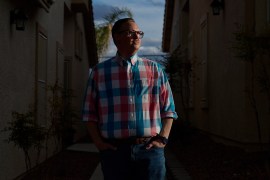Simplicity, Testing: Key To Why Some State-Run Exchanges Work
Stateline explores why some insurance exchanges function well and others -- including the one operated by the federal government -- are struggling. Meanwhile, California Democrats say a lookalike GOP health insurance website is confusing consumers, and Maryland faces a self-imposed mid-December deadline to repair its site.
Stateline: Why Some State-Run Health Exchanges Worked
Not every state-run exchange has performed well -- Hawaii, Oregon, Maryland and Vermont all have had significant problems. However, even though the 14 exchanges run by states and the District of Columbia serve less than a third of the U.S. population, they accounted for more than half of all Medicaid enrollments and 75 percent of private insurance sign-ups in October, according to the federal government's most recent enrollment report. It's too early to pinpoint exactly why some state-run exchanges did better than others, but two common characteristics stand out: simplicity and an abundance of testing (Vestal and Ollove, 12/10).
The Washington Post’s The Fix: How Does Your County Stack Up On Health Insurance? Consult This Interactive Map.
The battle between advocates and opponents of the federal health-care law is often chock-full of macroscopic statistics and data points. But what about looking at health care on a smaller scale? Thanks to an interactive infographic below from the consumer finance Web site ValuePenguin, you can take a look at how your own county measures up when it comes to what percentage of the population is insured, how many companies are offering plans on the exchange, and how it all compares to every other county in the country. Data for the tool come from the Census, HealthCare.gov and state insurance exchanges (Sullivan, 12/9).
The New York Times: Parties In California Squabble Over Another Website
California has enjoyed one of the smoothest rollouts of a health care exchange in the country. But the state’s Democrats are accusing Republicans of trying to sabotage the state-run exchange by putting up their own health care website (Lovett, 12/9).
Kaiser Health News: A Test For The Health Law In Scandal-Plagued Cities Of Southeast Los Angeles
The towns of Bell and Cudahy in southeast Los Angeles County are best known for corruption scandals that enraged and mobilized their residents. But to California health officials, the small, working class cities have a much more important distinction: They have the highest number of people that could benefit from the state’s insurance marketplace. More than 60,000 people, or about 60 percent of the residents, in the zip code encompassing Bell, Cudahy and Bell Gardens are eligible for financial help buying policies through the Covered California marketplace, according to the state’s projections (Gorman, 12/10).
The Baltimore Sun: Health Exchange Officials Face Deadline For Repairs
Even as [Maryland] state officials are racing to meet a self-imposed deadline to fix major glitches with the state's online insurance marketplace, some consumers continued to have problems buying health coverage through the exchange. Gov. Martin O'Malley pledged to correct the problems by mid-December, and two new state officials have been tapped to lead the exchange after weeks of technical problems and the resignation of its executive director (Cohn and Walker, 11/9).
Narrow networks of doctors and navigator availability also make news in California and Maine --
Kaiser Health News: Some California Insurance Plans Narrow Doctor, Hospital Choices
When Diane Shore got a letter that her health policy would be canceled, the small premium increase for a new plan didn’t bother her that much. What she’s really troubled by is: ‘My physicians will no longer be in this network of physicians, or the hospitals won’t be as well.’ Sixty-two year old Shore owned an IT consulting business in the San Francisco Bay Area, and retired when she sold her business in 2000. She says she wants to stick with the providers that she’s had for years, including the surgeon who cared for her during a bout of breast cancer in 1998 (Bartolone, 12/9).
The Associated Press: Several Maine Towns Far From Health Care Help
Nearly a dozen of Maine's largest communities are more than 15 miles from the nearest navigator or counselor who can help residents sign up for coverage on the health insurance marketplace, according to an analysis presented to lawmakers Monday. Of the 77 Maine towns where most people work and shop and where most hospitals and colleges are located, 11 don't have navigators and certified application counselors within 15 miles, the Maine Health Access Foundation found (Durkin, 12/9).






